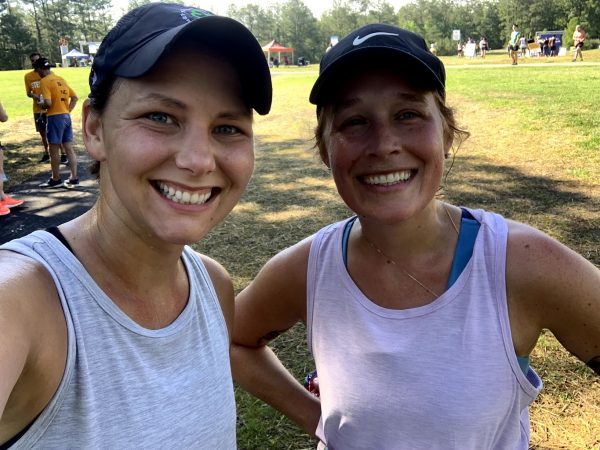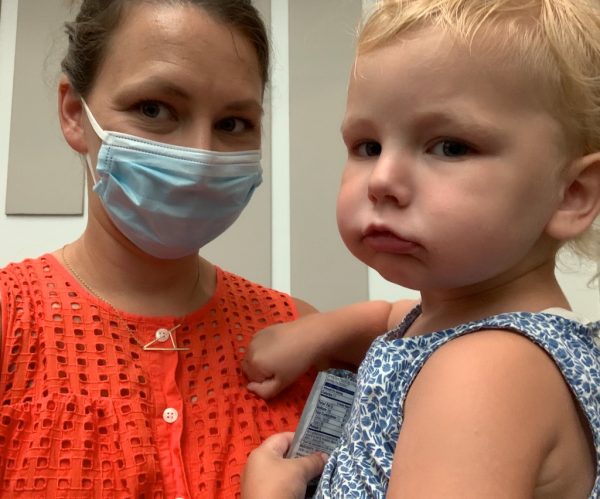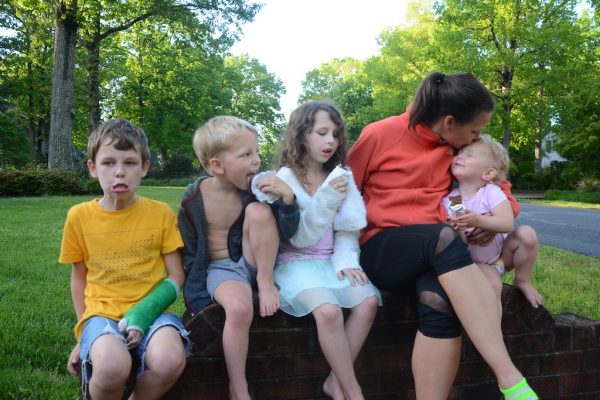As long as I’ve been a runner, I’ve always said that I don’t understand the concept of a runner’s high. I’ve never entered that sacred space where running is effortless and wonderful and I could just continue forever. And what are these endorphins people talk about? When I’m running, I’m working. Regardless of the pace or terrain, whenever I’m running I’m aware of the effort and I’m negotiating with myself for a break.
I’ve been a runner since high school, but I fell out of the habit sometime before baby #3 and after baby #4. But just before the pandemic started, I weaned baby #4 and started running regularly again. I even set some race goals and joined a gym.
Once the pandemic started, though, all of those goals (the races! the gym!) were gone. Instead, I was running for mental health. I didn’t even realize it at first, but as running etched itself back into my daily schedule amidst a global pandemic and social unrest, it was absolutely about my mental health. Exercise became a non-negotiable in my otherwise chaotic and messy schedule. I was running hard, and I was doing the hard work of getting back into shape. So I’d run, then I’d spend the rest of my time complaining about being sore and tired. “Maybe endorphins happen to other people, but not to me,” I’d say, all the while choosing to run and run and run.
Then, at some point this year it occurred to me — Hm. Maybe I do get endorphins? Maybe I do get the mental health boost that everyone talks about?! Maybe that’s why I keep lacing up my shoes and heading out over and over. Perhaps, without realizing it, my runs are alleviating stress just like all the experts have always said? I think that’s true. I think the stress-relief running provides doesn’t come with signs and flashing lights, but somewhere deep down where you need it most.
That said, another thing I realized in the past two years is that running is a lot of great things, but it’s not therapy. Running, enjoying a mug of tea, getting a manicure, cleaning your house, creating art — those things are all therapeutic, but they are not therapy. Therapy is therapy.
When you need real therapy, there is no substitute. If finding a therapist, or paying for one, seems overwhelming, check out Headway. Headway is an online, national network of online therapists that always accept insurance.
Did you know that one in four Americans have a treatable mental health condition, and yet 70 percent of therapists don’t accept insurance? The stress of the pandemic created unique and sweeping challenges all over the world, and with that it highlighted the need for quality, reliable, affordable therapy.
The pandemic also pushed me to find mental health resources for kids, and take a hard look at my screen habits, and curated my media consumption in ways that support my own mental health.
If the pandemic taught me anything, it’s that when I’m stressed and overwhelmed, I should always go for a run. Do the things that help you relax — take a bubble bath, do yoga, go for a drive singing your favorite songs at the top of your lungs. But also remember that there’s no replacement for therapy.
Disclaimer: this post is part of a collaboration with Responsival.












